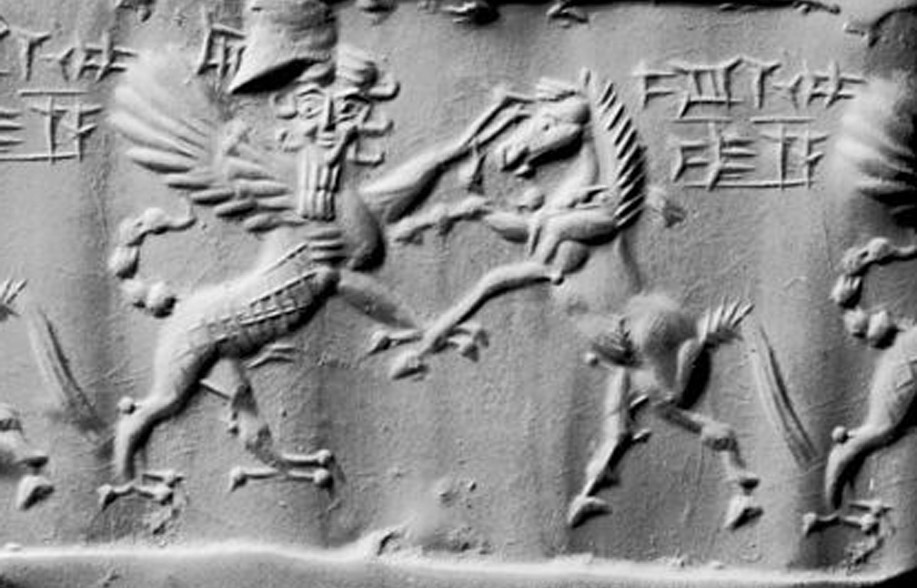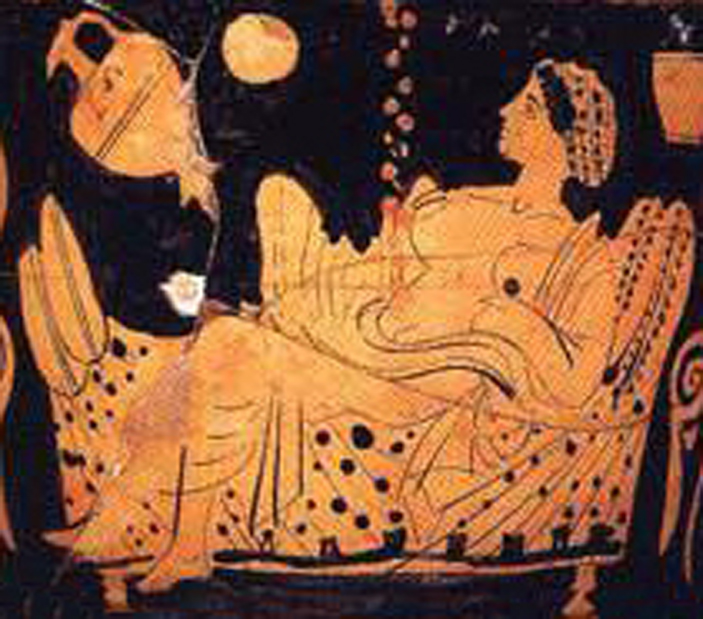It looks like you're using an Ad Blocker.
Please white-list or disable AboveTopSecret.com in your ad-blocking tool.
Thank you.
Some features of ATS will be disabled while you continue to use an ad-blocker.
share:
originally posted by: Kantzveldt
a reply to: Specimen
I think as i've just mentioned above that given the association of the Anzu with the principles of aerial might and Celestial enforcement you do start to see the Anzu incorporated into the hybrid symbolism of the storm Demon.




Im just having a pareidolia moment here.
The Hybrid symbolism could just be visually displaying characteristics, displaying attributes of characters or creatures, like Big cats for example, they like to sneak on their prey, or even possibly play with it before they eat. As human traits being thrown into the mix, it could just be just displaying intelligence...Like a human, and always with a smiley face too, or maybe a serious case of lockjaw.
edit on 4-2-2016 by Specimen because: (no reason given)
edit on 4-2-2016 by Specimen because: (no reason given)
originally posted by: Kantzveldt
a reply to: Anaana
Could be a Leopard though they did like to put dots on most things, the word Nimru covered both Leopard and Panther, but here's the thing, was there any development of the hybrid creature before the proposed impact date, and was it therefore a development motivated by the impact event?
Haha...they liked to inlay, which hasn't always survived the passage of time, that I suppose could seem as though it is all spotty, but still, a leopard is a leopard and it is a symbol widely used across all of Asia where leopards are the apex predator, and is generally used in association with the master/mistress of animals in those places. From Catal Hoyuk, to Eygpt and India, the leopard pelt is associated with particular classes of people. Including us, even today, as a carry over from our Indian colonialism, some of our regimental drummers, as part of their ritual attire, wear a leopard skin bib.
originally posted by: Kantzveldt
It might have been the case that Nimru was long associated with Perseus but no great significance associated with it, and you'll struggle before that date to find any representation of it, as you would with quite a few other of the constellations, but if the impact strikes can be considered to have originated from the Perseid stream all that changes, suddenly that beast aquires great significance, perhaps only then becomes seen as the storm Demon, and gains a great deal of symbolic baggage hence the hybrd characteristics of eagle/Anzu-Leopard-Lion.
A lion has a very different set of behaviours and characteristics to a leopard, and symbolically, an entirely different meaning. The hybrid combines the meaning of all the highest meanings of all the included species, but the over all context affects the implication, just as it does in any language. The more removed from nature humans become the more fearful they are of nature, big cats eventually all fall into the general role of devourer, winged, the devouring wind.
originally posted by: Kantzveldt
It also becomes an important symbol of the Neo-Sumerian restoration of Gudea, after all it was that beast which facilitated the passing of the Akkadians, it isn't a mušḫuššu the early hybrid more uumu naa´iru and despite the common attempt to associate it with Ningizhida there's no real basis for that either, it more likely relates to Ningirsu, given the association seen between Ninurta and the beast, and the fact it had the rear quarters of an Eagle and front paws of a lion like the Anzu bird also closely related to Ninurta.
It is the serpent-leopard hybrid that is most significant to Jiroft and Gudea. Gudea had leopards placed as guardians in front of his temples. To be a leopard and have leopard powers, the spots need to be there. Just as, for them, it is the talons of the eagle that are important, not, as with the Egyptians, the eye. The wings themselves depend upon the location of the gods, but it generally just indicates that the hybrid has the power to cross realms.
originally posted by: Kantzveldt
It may also have been the case that after the impact event the Leopard was considered more appropriate to represent the Nimru basis for the beast simply because of it's dots...
Well, not just because of it's dots, but those dots are stunning, and do, give the leopard the cloak of invisibility. If an impact came out of nowhere and struck like a thief in the night, then, possibly...
Thus the different aspects of people and beast looking forward, frontal and behind. The way they depict these aspects must mean a great deal in the
stories and have hidden meanings.
originally posted by: Kantzveldt
Just comparing papers. The tablets, that it is claimed describe the impact, have the object/s coming from MUL.APIN, specifically, the Triangulum...but either way, they are part of, or coming along, the Path of Enlil, which would explain why the hybrid would be in the procession as an air elemental, and/or as a meteor shower. And similarly with the Greeks, who associated the perseids with Priapic ejaculant, the Triangulum provides the necessary vector, and similarly ploughs the seed into the earth.
Yep, that works for me. The centaur, a man-beast, easily equated with Priapus, Pan etc etc. Works too. I'd guess it becomes a lion later due to the meteor shower arriving in July (Leo)??? But for the Jiroft the spotted cat had the properties that they associated with the shower, the lion less so, that's more for your patriarchial-limited female domain-harem types. But definately with the eagle-leopard-serpent, I think that you are on to something...but as Byrd says, you need to nail down the primary sources.
Nice job though.
a reply to: Anaana
The Greek tradition of Perseus is interesting and one i wanted to look at, basically i would consider it a secondary level of mythology related to the impact event, in that Perseus in being seen as born of the Perseid stream was then hardly a causation of it, but he did carry it's effects within his essential nature, Perseus might be from the Greek verb, "πέρθειν" (perthein), “to waste, ravage, sack, destroy”, and became the culture warrior hero archetype of the Danaans which must derive from this being seen in Mesopotamia as an expression of Ninurta at his finest.
To understand his greater context this consideration of the Golden Dawns musings upon the myth of Perseus and Andromeda is somewhere along the right lines in talking about Andromeda representing the lower nature and Perseus the higher, but in Mesopotamia that is more along the lines of the food chain, as you said the Nimru was the apex predator, so the relationship between a Panther and a stag is going to be somewhat fraught, though it also comes down to a question of management and the stag not being allowed to eat all the plants.

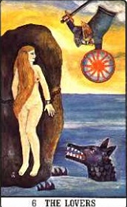 In the Mesopotamian mythological axis through these constellations, based at
Pegasus and Enki, Cetus the sea serpent/Plant of life represented organic life in all it's forms, the translation to Andromeda the Divine spirit
within the animal and from that point onward the spiritual qualities of Enlil's side of the Pantheon begin to manifest, with the Panther and Ninurta
the right to fight in one's own interests and take life in order to survive, willfulness and self determination, this continues through to Taurus and
Inanna and even the refusal to accept death, in some sense then these are always in conflict with nature.
In the Mesopotamian mythological axis through these constellations, based at
Pegasus and Enki, Cetus the sea serpent/Plant of life represented organic life in all it's forms, the translation to Andromeda the Divine spirit
within the animal and from that point onward the spiritual qualities of Enlil's side of the Pantheon begin to manifest, with the Panther and Ninurta
the right to fight in one's own interests and take life in order to survive, willfulness and self determination, this continues through to Taurus and
Inanna and even the refusal to accept death, in some sense then these are always in conflict with nature.
As this was all seen in terms of a continuum then Perseus must maintain an ongoing relationship with Andromeda, the Greek myth then indicates that thisprogression is a question of one's own survival,the liberation from simply being bound by the constraints of organic nature, Cetus the sea serpent, the potential liberation from this.
In taking the head of Medusa and using this as a weapon of instant death through absolute fear then Perseus has confronted and overcome what the Greeks were relating to an aspect of the Scythian Great Dragon Mother Earth Goddess, it's the abstraction of death through natural cause to serve the interests of the spiritual side of the Pantheon, Perseus has become death itself, the translation of an ultimate Feminine archetype into the qualities of a Masculine hero, not playing fair.
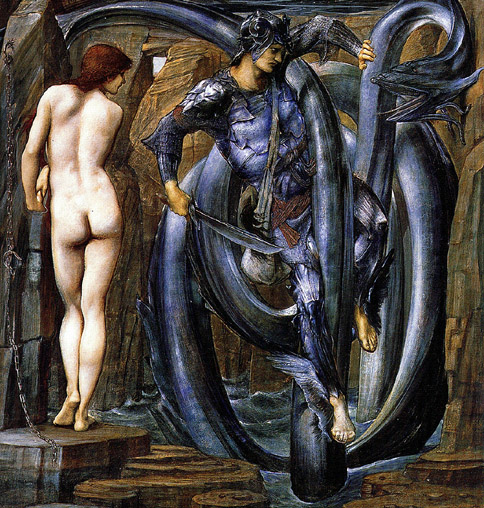
It's also considered the medieval tradition of Parzival is derivative of the cult of Perseus;
Danae being the original Princess locked away secretly in a high tower suggesting something of an ongoing esoteric tradition of people trying to get their heads around these considerations.
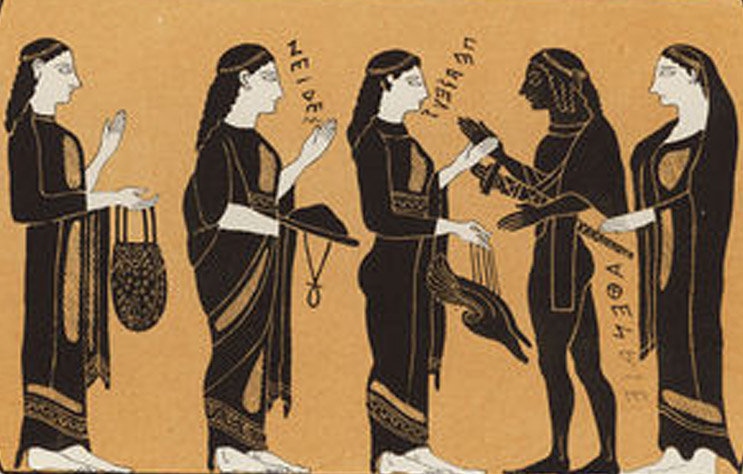
I haven't looked into Triangulum but you're right that was a primary symbol of Enlil and Ninurta as well as later Marduk
a reply to: Specimen
You're right that would be typical cat like behaviour, i thought the same when looking at the Hybrid on the Gudea seal, that it looked very pleased with itself.
The Greek tradition of Perseus is interesting and one i wanted to look at, basically i would consider it a secondary level of mythology related to the impact event, in that Perseus in being seen as born of the Perseid stream was then hardly a causation of it, but he did carry it's effects within his essential nature, Perseus might be from the Greek verb, "πέρθειν" (perthein), “to waste, ravage, sack, destroy”, and became the culture warrior hero archetype of the Danaans which must derive from this being seen in Mesopotamia as an expression of Ninurta at his finest.
To understand his greater context this consideration of the Golden Dawns musings upon the myth of Perseus and Andromeda is somewhere along the right lines in talking about Andromeda representing the lower nature and Perseus the higher, but in Mesopotamia that is more along the lines of the food chain, as you said the Nimru was the apex predator, so the relationship between a Panther and a stag is going to be somewhat fraught, though it also comes down to a question of management and the stag not being allowed to eat all the plants.

 In the Mesopotamian mythological axis through these constellations, based at
Pegasus and Enki, Cetus the sea serpent/Plant of life represented organic life in all it's forms, the translation to Andromeda the Divine spirit
within the animal and from that point onward the spiritual qualities of Enlil's side of the Pantheon begin to manifest, with the Panther and Ninurta
the right to fight in one's own interests and take life in order to survive, willfulness and self determination, this continues through to Taurus and
Inanna and even the refusal to accept death, in some sense then these are always in conflict with nature.
In the Mesopotamian mythological axis through these constellations, based at
Pegasus and Enki, Cetus the sea serpent/Plant of life represented organic life in all it's forms, the translation to Andromeda the Divine spirit
within the animal and from that point onward the spiritual qualities of Enlil's side of the Pantheon begin to manifest, with the Panther and Ninurta
the right to fight in one's own interests and take life in order to survive, willfulness and self determination, this continues through to Taurus and
Inanna and even the refusal to accept death, in some sense then these are always in conflict with nature. As this was all seen in terms of a continuum then Perseus must maintain an ongoing relationship with Andromeda, the Greek myth then indicates that thisprogression is a question of one's own survival,the liberation from simply being bound by the constraints of organic nature, Cetus the sea serpent, the potential liberation from this.
In taking the head of Medusa and using this as a weapon of instant death through absolute fear then Perseus has confronted and overcome what the Greeks were relating to an aspect of the Scythian Great Dragon Mother Earth Goddess, it's the abstraction of death through natural cause to serve the interests of the spiritual side of the Pantheon, Perseus has become death itself, the translation of an ultimate Feminine archetype into the qualities of a Masculine hero, not playing fair.

It's also considered the medieval tradition of Parzival is derivative of the cult of Perseus;
Rescue of wife fom a sea monsterPerseus rescues Andromeda from a sea monster called Cetus. In the Peredur version of the legend the Empress is rescued from the addanc or sea crocodile.
Visit to the three sisterPerseus visits the three gorgon sisters. In Peredur version there are again three sisters
Name of female anti heroIn the Perseus legend it is Medusa Gorgon - in the Arthurian legend it is Morgan le fay which is a contraction
Danae being the original Princess locked away secretly in a high tower suggesting something of an ongoing esoteric tradition of people trying to get their heads around these considerations.

I haven't looked into Triangulum but you're right that was a primary symbol of Enlil and Ninurta as well as later Marduk
a reply to: Specimen
You're right that would be typical cat like behaviour, i thought the same when looking at the Hybrid on the Gudea seal, that it looked very pleased with itself.
edit on Kam22935vAmerica/ChicagoFriday0529 by Kantzveldt because: (no reason given)
originally posted by: Kantzveldt
a reply to: Anaana
The Greek tradition of Perseus is interesting and one i wanted to look at, basically i would consider it a secondary level of mythology related to the impact event, in that Perseus in being seen as born of the Perseid stream was then hardly a causation of it, but he did carry it's effects within his essential nature, Perseus might be from the Greek verb, "πέρθειν" (perthein), “to waste, ravage, sack, destroy”, and became the culture warrior hero archetype of the Danaans which must derive from this being seen in Mesopotamia as an expression of Ninurta at his finest.
To understand his greater context this consideration of the Golden Dawns musings upon the myth of Perseus and Andromeda
The legend of Perseus is too far distant to be an influence.... and sadly, the Golden Dawn is a source that is not very accurate. While it's mystical and interesting and might allow you to do some self-introspection, it's mostly material ... pulled out of ... someone's imagination.
a reply to: Byrd
I didn't say it was am influence on the Mesopotamia's, maybe the other way around but it doesn't really matter, it still has to be of interest what the Greek made of a culture hero born of the Perseid stream and the tradition associated with the constellation we're familiar with, of course Yeat's poem inspired by Perseus and Andromeda are about what he personally made of the texts, but that's all history is ever about anyway, what did people make of things...
I didn't say it was am influence on the Mesopotamia's, maybe the other way around but it doesn't really matter, it still has to be of interest what the Greek made of a culture hero born of the Perseid stream and the tradition associated with the constellation we're familiar with, of course Yeat's poem inspired by Perseus and Andromeda are about what he personally made of the texts, but that's all history is ever about anyway, what did people make of things...
And then you stood among the dragon-rings.
I mocked, being crazy, but you mastered it
And broke the chain and set my ankles free,
Saint George or else a pagan Perseus;
And now we stare astonished at the sea,
And a miraculous strange bird shrieks at us.
originally posted by: Kantzveldt
a reply to: Byrd
I didn't say it was am influence on the Mesopotamia's, maybe the other way around but it doesn't really matter, it still has to be of interest what the Greek made of a culture hero born of the Perseid stream ...
Other way around, I'm afraid. The constellation was named after the hero. The legends were there first and only later (when they constructed a map of constellations) did they decide to name a cluster of stars after him.
a reply to: Byrd
Oh right so there was no Greek constellation Perseus until 2nd-century astronomer Ptolemy decided to giver it a mention in his list, and early Greek references and illustrations of say the Cetus-Perseus-Andromeda relationship , showing curious correlations to the basis for the Mesopotamian understandings, that's all merely coincidental. Ptolemy thought the whole thing up on whim.
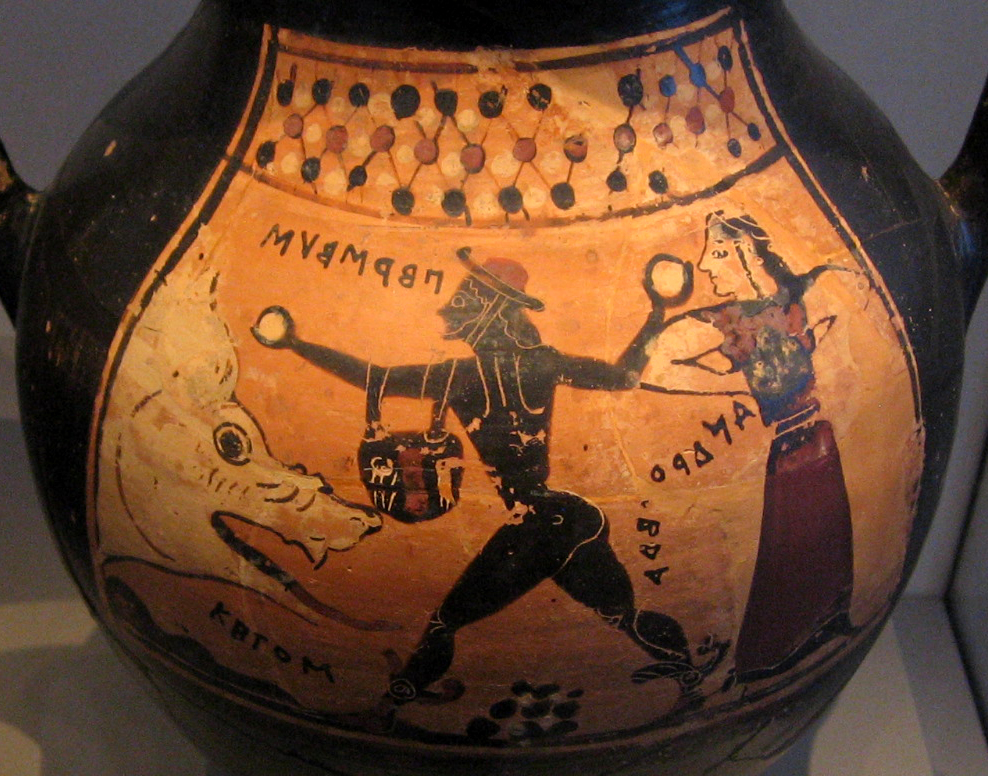
We have illustrations of the Mother of Perseus being impregnated by the Perseid stream and you try to suggest the relationship of the Perseus mythos to the actual constellation was later and casual....
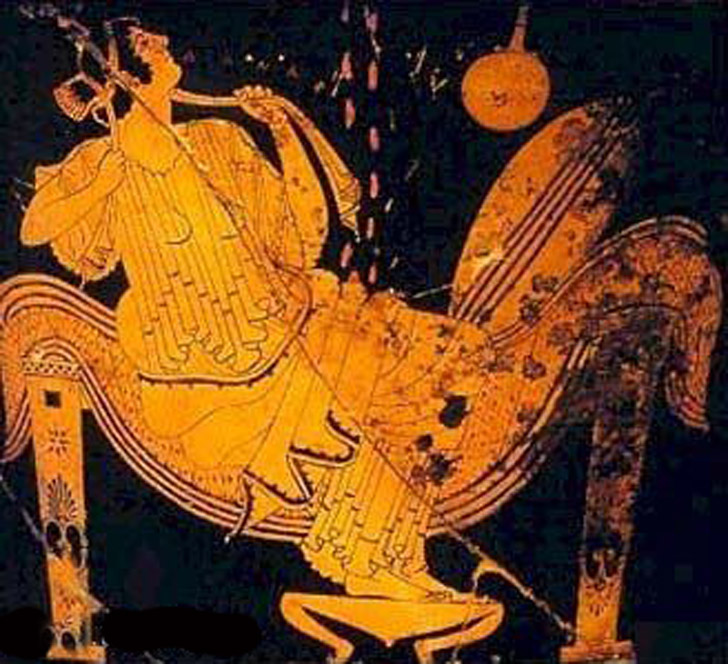
Ir's actually a pretty radical conspiracy angle you've got going on there, the Greeks had no notion of Constellations until Ptolemy made the whole thing up and related some pointless old stories to them, truly amazing.
Oh right so there was no Greek constellation Perseus until 2nd-century astronomer Ptolemy decided to giver it a mention in his list, and early Greek references and illustrations of say the Cetus-Perseus-Andromeda relationship , showing curious correlations to the basis for the Mesopotamian understandings, that's all merely coincidental. Ptolemy thought the whole thing up on whim.

We have illustrations of the Mother of Perseus being impregnated by the Perseid stream and you try to suggest the relationship of the Perseus mythos to the actual constellation was later and casual....

Ir's actually a pretty radical conspiracy angle you've got going on there, the Greeks had no notion of Constellations until Ptolemy made the whole thing up and related some pointless old stories to them, truly amazing.
edit on Kpm22936vAmerica/ChicagoSaturday0629 by Kantzveldt because: (no
reason given)
originally posted by: Kantzveldt
a reply to: Byrd
Oh right so there was no Greek constellation Perseus until 2nd-century astronomer Ptolemy decided to giver it a mention in his list, and early Greek references and illustrations of say the Cetus-Perseus-Andromeda relationship , showing curious correlations to the basis for the Mesopotamian understandings, that's all merely coincidental. Ptolemy thought the whole thing up on whim.
I must have mislaid my coffee this morning. Let me back up, then, and see if I can make myself a bit clearer.
(A few mini-points on Greek history for our readers who may not be up on all the gazilion dates)
* Greece was only sparsely inhabited until the Bronze Age (around 1100 BC and the rise of the Mycenean civilization)
* Greece enters a 200 year Dark Age about 800 BC
* Classical Greece (written languages, tales, etc) begins about 600 BC
* The Greeks describe him as a king of Mycenea (around 1000-800 BC)
* The Greeks associate six constellations with the myth : en.wikipedia.org...(mythology)#Constellations
So the earliest mention of a Perseus, etc, would have been around 800 BC... a long time after the Babylonian star tables (where he's not called Perseus.) en.wikipedia.org...
And for people willing to put up with frames, there's an article about it here: articles.adsabs.harvard.edu...
Okay, now that I've gotten the basics out of the way, my statement SHOULD have been this:
"Perseus" (a Greek hero) wasn't known until long after the Babylonians had identified the constellation with a different deity. The Greeks renamed the constellation sometime in their expansionist era, after 600 BC. Perseus is a popular figure in legend and in plays and stories. They named constellations after all their great heroes.
It wasn't a case of something in the sky being called "Perseus" and the hero being named after the constellation or a story made up about the constellation. The sequence of events is that this part of the sky was named by the Babylonians long before the Greek or Minoan or Mycenean civilizations existed. As the Greeks developed their own body of legends and mythology, they named the constellations. So the story of Perseus was there first and the name of the sky came second.
I hope that's clearer. Sorry for being so vague.
a reply to: Byrd
It's helpfully less absolutist but you're still inventing issues which aren't really there, given the amount of Mitanni interest seen on seals showing the Panther and Stag symbolism and the fact that they were;
And that Perseus was understood as the legendary founder of Mycenae and of the Perseid dynasty of Danaans;
Thus there is actual chronological overlap between the Mitanni and Mycenae and no great Geographic distance as both extended into regions of modern day Turkey, so it shouldn't be difficult at all to see how such traditions found their way into Greek culture, the Perseus mythology was never independent from association with the constellation.
It's helpfully less absolutist but you're still inventing issues which aren't really there, given the amount of Mitanni interest seen on seals showing the Panther and Stag symbolism and the fact that they were;
Hurrian-speaking state in northern Syria and southeast Anatolia from ca. 1500 BC–1300 BC. Founded by an Indo-Aryan ruling class governing a predominantly Hurrian population
And that Perseus was understood as the legendary founder of Mycenae and of the Perseid dynasty of Danaans;
Mycenaean Greece refers to the last phase of the Bronze Age in Ancient Greece (c. 1600–1100 BCE). It represents the first advanced civilization in mainland Greece,
Thus there is actual chronological overlap between the Mitanni and Mycenae and no great Geographic distance as both extended into regions of modern day Turkey, so it shouldn't be difficult at all to see how such traditions found their way into Greek culture, the Perseus mythology was never independent from association with the constellation.
originally posted by: Kantzveldt
Thus there is actual chronological overlap between the Mitanni and Mycenae and no great Geographic distance as both extended into regions of modern day Turkey, so it shouldn't be difficult at all to see how such traditions found their way into Greek culture, the Perseus mythology was never independent from association with the constellation.
That's not the problem.
The problem is that you can't show there was a constellation named Perseus before there was a hero named Perseus (as you stated earlier.)
We can show that the legend was there (from artwork and many other sources) and that later the Greeks have a constellation named for the popular legend.
a reply to: Byrd
If stating that the Perseus mythology was never independent from association with the constellation isn't the problem then i really do fail to see what is, the entire tradition was astral based from Pegasus the horse of Perseus through to the relationship with Andromeda and Cetus the sea serpent, i can't show that there was a constellation Perseus distinct from the narrative because there wasn't, they had no interest in lists and direct diagrammatic representations only the wisdom tradition, that was Greek culture.
For a broader context you'd have to look at the astral cult of Mithra and the close connection with Perseus, particularly Per seus of Tarsus, in the initial thread regarding the Mitannian concern with these constellations the slaying of the bull was considered as a primary association, then there are the traditions of the Eastern Meditteranean;
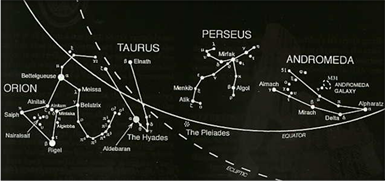

But again none of them directly explained themselves and i'm actually starting to see the wisdom in that...
If stating that the Perseus mythology was never independent from association with the constellation isn't the problem then i really do fail to see what is, the entire tradition was astral based from Pegasus the horse of Perseus through to the relationship with Andromeda and Cetus the sea serpent, i can't show that there was a constellation Perseus distinct from the narrative because there wasn't, they had no interest in lists and direct diagrammatic representations only the wisdom tradition, that was Greek culture.
For a broader context you'd have to look at the astral cult of Mithra and the close connection with Perseus, particularly Per seus of Tarsus, in the initial thread regarding the Mitannian concern with these constellations the slaying of the bull was considered as a primary association, then there are the traditions of the Eastern Meditteranean;


But again none of them directly explained themselves and i'm actually starting to see the wisdom in that...
Here's something i came across today, it's sort of a lament for the grasslands following devastation of the grass carrying fire as far as E-anna/Uruk,
dating to the early 2nd millenium, the translator notes that the glowing sherds that rained down seems like meteorites.
When the rain had rained, when the brickwork had been destroyed,
When glowing sherds had rained (down),
(When) Dumuzi(d) confronted (him),
The rain had rained (and) the brickwork had been demolished,
The cattle pen had been destroyed (and) the sheepfold had been uprooted,
In the river(s) a terrible flood had been left behind
In the marsh(es) a terrible aura
The šumunda grass it is the fire-carrier cannot be put in bundles
The grass cannot be made tremble, the grass cannot be loosened!
The grass cannot be torn out For me
If you(?) set down (or) if you(?) lay down,
While he set fire, it will spread out (quickly),
The šumunda grass, his place are the brackish waters,
(Saying) ‘I will set fire, I will set fire,’ he pushes forward,
To the foundation of E’ana(k) he directs the fire
What is the matter with the numun plant
a reply to: rickymouse
Good thought. I have always thought that Sodom and Gomorrah was due to a comet or meteor and not a punishment from God. It makes sense especially with the leakage of salt after some meteor strikes.
Good thought. I have always thought that Sodom and Gomorrah was due to a comet or meteor and not a punishment from God. It makes sense especially with the leakage of salt after some meteor strikes.
originally posted by: jazzy4
a reply to: rickymouse
Good thought. I have always thought that Sodom and Gomorrah was due to a comet or meteor and not a punishment from God. It makes sense especially with the leakage of salt after some meteor strikes.
Oh, salt from a meteor, eh?
Maybe you're right. It might have nothing to do with natural salt formations found all around the Dead Sea.
Link1
Link2
Harte
originally posted by: Harte
originally posted by: jazzy4
a reply to: rickymouse
Good thought. I have always thought that Sodom and Gomorrah was due to a comet or meteor and not a punishment from God. It makes sense especially with the leakage of salt after some meteor strikes.
Oh, salt from a meteor, eh?
Maybe you're right. It might have nothing to do with natural salt formations found all around the Dead Sea.
Link1
Link2
Harte
For some strange reason, salt is found around some meteor impacts. They really do not know why exactly it happens. It could be caused by the energy of the impact's effect on the area which causes salt to be formed or it could have been in the meteors. I've seen that in a couple of articles over the years written by those in that field.
The dead sea is pretty far from the location of Saddam and Gamorra but then again, a lot of that area was under water long ago.
originally posted by: rickymouse
originally posted by: Harte
originally posted by: jazzy4
a reply to: rickymouse
Good thought. I have always thought that Sodom and Gomorrah was due to a comet or meteor and not a punishment from God. It makes sense especially with the leakage of salt after some meteor strikes.
Oh, salt from a meteor, eh?
Maybe you're right. It might have nothing to do with natural salt formations found all around the Dead Sea.
Link1
Link2
Harte
For some strange reason, salt is found around some meteor impacts. They really do not know why exactly it happens. It could be caused by the energy of the impact's effect on the area which causes salt to be formed or it could have been in the meteors. I've seen that in a couple of articles over the years written by those in that field.
The dead sea is pretty far from the location of Saddam and Gamorra but then again, a lot of that area was under water long ago.
ccording to the Torah, the kingdoms of Sodom and Gomorrah were allied with the cities of Admah, Zeboim and Bela. These five cities, also known as the "cities of the plain", were situated on the Jordan River plain in the southern region of the land of Canaan. The plain, which corresponds to the area just north of the modern-day Dead Sea...
wiki
Harte
new topics
-
Who guards the guards
US Political Madness: 2 hours ago -
Has Tesla manipulated data logs to cover up auto pilot crash?
Automotive Discussion: 4 hours ago -
whistleblower Captain Bill Uhouse on the Kingman UFO recovery
Aliens and UFOs: 9 hours ago -
1980s Arcade
General Chit Chat: 11 hours ago
top topics
-
Lawsuit Seeks to ‘Ban the Jab’ in Florida
Diseases and Pandemics: 16 hours ago, 21 flags -
CIA botched its handling of sexual assault allegations, House intel report says
Breaking Alternative News: 14 hours ago, 10 flags -
whistleblower Captain Bill Uhouse on the Kingman UFO recovery
Aliens and UFOs: 9 hours ago, 9 flags -
Deadpool and Wolverine
Movies: 12 hours ago, 4 flags -
1980s Arcade
General Chit Chat: 11 hours ago, 4 flags -
Teenager makes chess history becoming the youngest challenger for the world championship crown
Other Current Events: 13 hours ago, 3 flags -
Who guards the guards
US Political Madness: 2 hours ago, 3 flags -
Has Tesla manipulated data logs to cover up auto pilot crash?
Automotive Discussion: 4 hours ago, 1 flags
active topics
-
The Superstition of Full Moons Filling Hospitals Turns Out To Be True!
Medical Issues & Conspiracies • 18 • : firerescue -
IDF Intel Chief Resigns Over Hamas attack
Middle East Issues • 34 • : FlyersFan -
Lawsuit Seeks to ‘Ban the Jab’ in Florida
Diseases and Pandemics • 26 • : network dude -
Candidate TRUMP Now Has Crazy Judge JUAN MERCHAN After Him - The Stormy Daniels Hush-Money Case.
Political Conspiracies • 629 • : Justoneman -
15 Unhealthiest Sodas On The Market
Health & Wellness • 37 • : firerescue -
"We're All Hamas" Heard at Columbia University Protests
Social Issues and Civil Unrest • 211 • : Vermilion -
Mood Music Part VI
Music • 3088 • : TheWoker -
whistleblower Captain Bill Uhouse on the Kingman UFO recovery
Aliens and UFOs • 9 • : Ophiuchus1 -
The Democrats Take Control the House - Look what happened while you were sleeping
US Political Madness • 107 • : watchitburn -
They Killed Dr. Who for Good
Rant • 65 • : grey580

